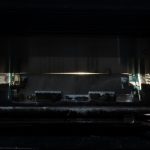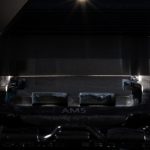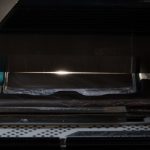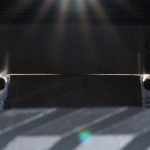Lessons Learned
On the LGA1700, the hybrid combination of Watercool Heavy Backplate and Aquacomputer cuplex kryos NEXT was a really positive performance surprise. This setup once again clearly shows how important an optimal fit is through the shape of the coldplate AND the distribution of contact pressure via a rigid mounting mechanism.
The new metrics of differential pressure and temperature delta between inlet and outlet do not offer any completely new insights, but only slightly different perspectives on the already known results. However, they can be recorded with almost no additional effort and will therefore appear again in future tests. Since these metrics are very dependent on the pump speed and the prevailing pressure at the measuring points, another series of tests with a constant flow rate instead of a constant pump speed could be interesting. For this, however, I will probably rely on a ball valve for throttling rather than variable pump speed and validate all the data measured so far again so that the data is always representative.
The fact that the tests on AM5 were sometimes very inconsistent is most likely not due to degradation of the solder, as the performance in the initial cycles was actually better than in the previous test with Loop 1.0 when comparing the same block in both tests. I therefore strongly suspect the cause to be a semi-plastic deformation of the AM5 CPU in the socket after installation and approx. 10 subsequent water block installations. The CPU has to settle in the socket, so to speak.
Of course, this is extremely annoying and tedious if you want to test fairly and reproducibly. If the sequence in the diagram of test 2 suddenly contradicts test 1 completely, but only on one of 2 platforms, this is a bitter kick in the proverbial shins of honest motivation. Alternatively, you could of course test with artificial heaters instead of real CPUs, which would probably be more consistent and simpler, but also not representative of today’s banana CPUs that a normal user has to deal with at home.
Lapping the CPUs flat also seems impractical to me, as the reference to mass reality would be lost and you would have to grind the CPU in the socket anyway to avoid deformation during assembly. However, if the CPU settles again after assembly and a few heat cycles, as in my case, and the bending of the mainboard is also a variable, then no CPU will ever be truly flat.
Abstraction is only ever helpful if the reference to reality remains reproducible and realistic. With current CPUs, however, there are simply too many uncontrolled variables and so for me the “most correct” way is still to test water blocks on real CPUs in real mainboards. Even if it sometimes takes a third or fourth attempt for the results to be plausible, at least they are real, measured results without abstraction or re-calculation. The CSV files with the raw data are again available here.
Conclusion Corsair iCUE XC7 RGB Elite LCD
The Corsair iCUE XC7 RGB Elite LCD water block is not a front-runner in terms of performance, but effectively sits in the middle of the market. The fact that we were only able to retest the best water blocks with the new test setup only makes the XC7 Elite LCD appear worse in the diagrams than it actually is.
As a pure water cooling block, the XC7 Elite LCD is no revolution. However, together with the integrated telemetry detection, the RGB lighting and the LCD display, the block is a technology carrier and therefore a real innovation on the water cooling market. Gone are the days when a water block was just the most efficient heat exchanger possible. The XC7 Elite LCD impressively demonstrates that the heart of the water cooling system can also look good and integrate sensors, lighting and a fancy 30 FPS 24-bit LCD display.
With all the technology hype, however, the basic functions must not be neglected and consequently the lack of labeling of inlet and outlet connections must be criticized. In addition, more functions in the “hardware screen” without running iCUE software would be desirable, such as temperature-dependent RGB control or the alternating switching of several “hardware screens” after a definable time.
The block’s extremely simple and quick installation on both platforms, its high-quality workmanship and its elegant and functional design must be acknowledged. At around 170 euros, the XC7 Elite LCD is not the cheapest water block on the market. For the target group of gamers and RGB enthusiasts, however, there is hardly anything comparable and when you consider the entire range of functions, the price is quite reasonable, especially in comparison to some other, even more expensive, less smart competitor products.
As a performance enthusiast, I personally would have liked better cooling performance and a more solid installation on Intel LGA1700, but for all RGB fetishists, the Corsair iCUE XC7 RGB Elite LCD should definitely be on the shortlist for the next water cooling system. The block is also available with a white housing or alternatively without an LCD display for around 80 euros.
Corsair iCUE XC7 RGB Elite LCD, schwarz (CX-9010023-WW)
 | Lagernd im Außenlager, Lieferung 2-3 WerktageStand: 08.07.24 11:23 | 169,89 €*Stand: 08.07.24 11:29 |
 | Lagernd | 169,90 €*Stand: 08.07.24 10:47 |
 | Lager Lieferant: Sofort lieferbar, 2-4 Werktage | 188,80 €*Stand: 08.07.24 11:04 |
Corsair iCUE LINK XC7 RGB Elite, weiß (CX-9010022-WW)
 | Auf Lager; Lieferzeit: 2 Werktage | 78,90 €*Stand: 08.07.24 09:59 |
 | Lagernd im Außenlager, Lieferung 2-3 WerktageStand: 08.07.24 11:23 | 94,89 €*Stand: 08.07.24 11:29 |
 | Lagernd | 94,90 €*Stand: 08.07.24 10:47 |
The water block was kindly made available to us by Corsair for this test. There was no obligation to publish it. Furthermore, no influence was exerted on the tests and their results.
- 1 - Intro and test loop 2.0
- 2 - Unboxing Corsair XC7 RGB Elite LCD
- 3 - Teardown and comparison with XC7 Pro
- 4 - iCUE software options
- 5 - Performance LGA1700 – Intel Core i9-13900KF
- 6 - Performance AM5 – AMD Ryzen 9 7950X
- 7 - WLP-Abdrücke und Montage-Erfahrungen
- 8 - Lessons learned, summary and conclusion









































9 Antworten
Kommentar
Lade neue Kommentare
Urgestein
Mitglied
Veteran
Veteran
Urgestein
Veteran
Moderator
Veteran
Urgestein
Alle Kommentare lesen unter igor´sLAB Community →